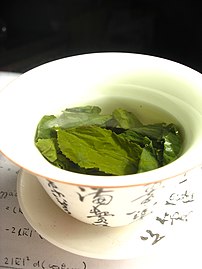Here are the secrets your dentist may not want you to know — but you need to know to get the best care possible:
………………..
Secret #1: Your dentist may not be as educated as you think.
Dentistry has changed a lot since your dentist graduated from dental school. There have been major advances in most materials used in fillings, bonding and root canals. If your dentist is not actively engaged in continuing education, it is unlikely that he or she is keeping up with these developments.
Secret#2. Your dentist may not have the latest technology. ret #2:
Digital x-ray: Dentists who do not have digital x-ray equipment are practicing in the dark ages. Digital x-rays use less radiation than film. They are easier to read and the ability to manipulate contrast makes diagnosis more accurate.
Ultrasonic Cleaning: Ultrasonic instruments vibrate plaque and calculus off your teeth, even in areas below your gums. It is much more comfortable than old-fashioned hand scraping.
CEREC: The CEREC system lets your dentist provide a ceramic crown or veneer in only one visit. CEREC means fewer injections, less drilling and no annoying temporaries.
Diagnodent: This is a laser that the dentist shines on the tooth and it tells whether there is a cavity and how deep it is. With the use of this technology, the dentist can detect cavities, and find them at an earlier stage, than traditional poking around the tooth.
Secret #3: Your dentist may be using mercury.
Mercury is toxic. Norway and Sweden have banned the use of mercury fillings.. But mercury fillings are less expensive and easier for the dentist to use. If your dentist does not use composite fillings, don’t go to that dentist any more. In the US, the FDA is way behind the ball and not actively warning patients about this like they have been mandated by the courts to do.
Secret #4: The lab may be more important than your dentist.
Dental labs create dentures, crowns, bridges, orthodontic appliances, and other dental restorations like implant crowns. There is a huge difference in the quality of these labs. You should be particularly wary if your dentist is using a lab in China or Mexico. Some of the top labs in the U.S. are Aurum Ceramics, MicroDental Laboratories, da Vinci Dental Studio, and Williams Dental Lab.
Secret #5: There’s more to good dentistry than filling cavities.
A competent dentist screens for more than tooth decay. He or she should be concerned about sleep apnea, jaw-related pain known as TMJ or temporomandibular joint disorder, periodontal disease, oral cancer, diabetes and hypertension.
Secret #6: You are probably using the wrong specialist for dental implants.
Since dental implants involve the removal of a tooth and replacing it with an artificial tooth, many patients assume that an oral surgeon is best qualified to do it. This can be a flawed assumption. Periodontists, who specialize in gum disease, may be a better option. Periodontists have special training in gum tissue and underlying bone in the mouth, which are significant issues in dental implants.
Secret #7: Bad dental advice about dentures can be fatal!
Dentures are no joke. Your dentist should examine your dentures for evidence of wear. Wearing down the teeth on your dentures can result in distorted facial characteristics, collapse of the bite and closure of the airway.
Secret #8: Your dentist may not know enough about sleep apnea.
The most common form of sleep apnea is caused by a blockage of the airway during sleep. It is a pretty scary condition. The patient can stop breathing hundreds of times during the night. A common treatment for sleep apnea is Continuous Positive Airway Pressure (CPAP), which involves blowing pressurized room air through the airway at high enough pressure to keep the airway open.
As an alternative, your dentist, working with your physician, can custom make a device that guides the lower jaw forward, called a mandibular advancement device or MAD. MAD devices are more comfortable to wear and the compliance rates are much higher than using CPAP.
Secret #9: Not all cosmetic dentists have the skills to really improve your smile.
Any dentist can call herself a “cosmetic dentist.” Your dentist should be able to show you ten or more before and after photographs or videos, and be willing to give you the names of patients who have consented to be used as references.
Secret #10: How to avoid the root canal your dentist says you need.
Ask about the “ferrule effect.” Technically, this means that a root canal is unlikely to be successful if there is not enough tooth structure above the gum line to protect the tooth from coming loose or fracturing after it has been prepared for a crown. If your tooth fails the “ferrule effect” test, you might be better off with an extraction and an implant.
Source: Daily Finance August 27, 2009
![Reblog this post [with Zemanta]](https://i0.wp.com/img.zemanta.com/reblog_e.png?w=580)














